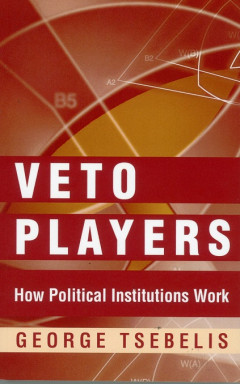Ditapis dengan
Ditemukan 1 dari pencarian Anda melalui kata kunci: author="George Tsebelis"

Veto Players : How Political Institutions Work
Political scientists have long classified systems of government as parliementery or presidential, two party or multiparty, and so on. But such distinctions often fail to provide useful insights. For exemple, how are we to compare the United States, a presidential bicameral regime with two weak parties, to Denmark, a perliementary unicameral regime with many stronge parties? Veto Players advance…
- Edisi
- -
- ISBN/ISSN
- 978-0-691-09989-7
- Deskripsi Fisik
- xvii, 317 hlm., 23 cm.
- Judul Seri
- -
- No. Panggil
- 320.3 TSE v
 Karya Umum
Karya Umum  Filsafat
Filsafat  Agama
Agama  Ilmu-ilmu Sosial
Ilmu-ilmu Sosial  Bahasa
Bahasa  Ilmu-ilmu Murni
Ilmu-ilmu Murni  Ilmu-ilmu Terapan
Ilmu-ilmu Terapan  Kesenian, Hiburan, dan Olahraga
Kesenian, Hiburan, dan Olahraga  Kesusastraan
Kesusastraan  Geografi dan Sejarah
Geografi dan Sejarah